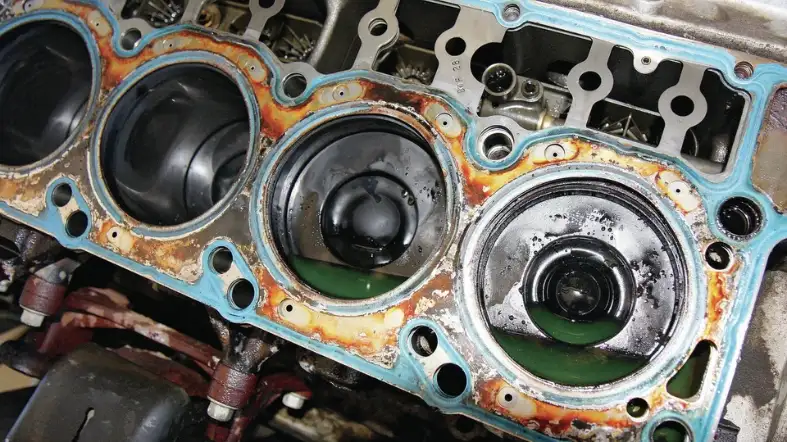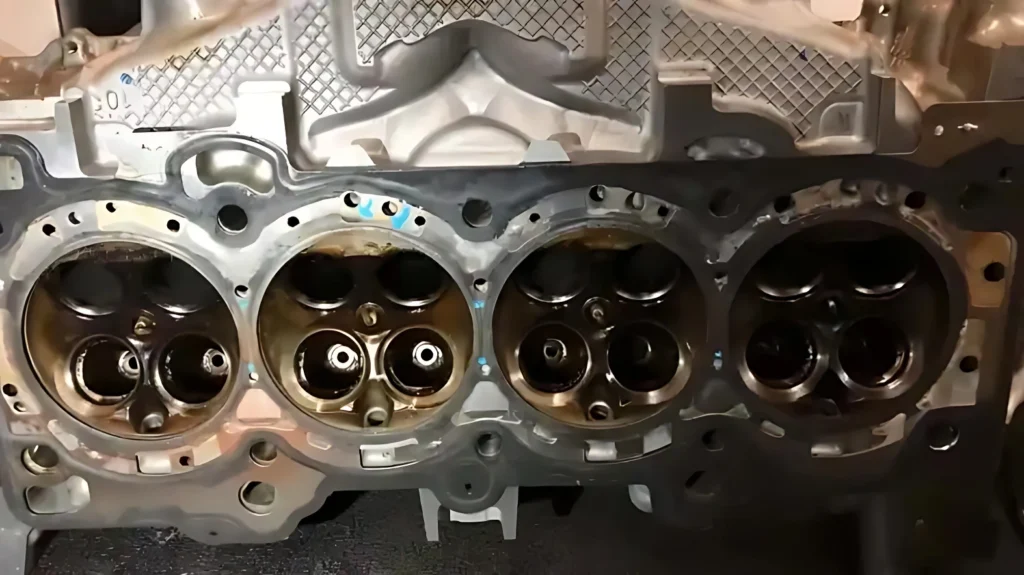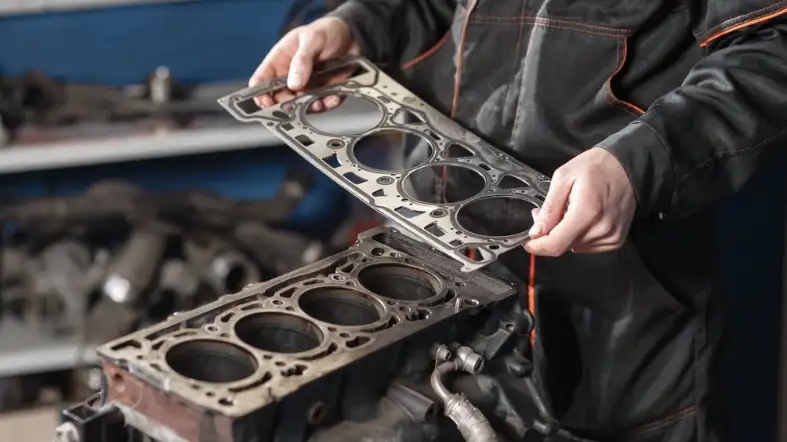Struggling with Paccar MX 13 head gasket problems? You’re not alone.
Our in-depth guide provides clear, actionable solutions for these notorious issues.
Navigate the complexity of head gasket repairs with confidence and ease.
Don’t let mechanical troubles stall your journey. Keep your engine running smoothly and efficiently.

Paccar Mx 13 Head Gasket Problems
1. Incorrect Installation
Incorrect installation is a significant headache when it comes to head gaskets.
If it’s not put in just right, you’re setting yourself up for trouble. When the gasket doesn’t seal things up like it should, that leads to nasty leaks, including coolant and oil leaks.
So, here’s the deal: pay close attention to the manufacturer’s instructions when you’re installing that gasket.
Get it right the first time, and you’ll avoid a world of problems down the road.
2. Overheating
Don’t let your engine get too hot, or you’ll be in hot water with a head gasket that’s warped.
That overheating can make the gasket lose its grip, causing leaks.
Regularly check your cooling system – that’s the engine’s cooling system – and make sure it’s tip-top.
If you spot any issues, deal with them pronto. Keeping your engine cool is the name of the game here.
3. Detonation
Now, let’s talk about detonation. It’s like an engine’s version of knocking on wood, but it’s not a good thing.
Detonation happens when the air and fuel in the cylinder start a party before they’re supposed to.
Boom! That creates extra pressure that can strain your gasket. So, keep your engine running like a well-oiled machine to prevent this headache.
4. Material Failure
Sometimes, you’re dealing with a head gasket with material issues.
That can be due to shoddy manufacturing or using low-quality stuff.
When you inspect your gasket and see any wear and tear or damage, that’s a red flag.
Choose a brand you can trust when replacing your gasket, and you’ll lower the risk of material failure.
5. Cylinder Pressure
Let’s dive into cylinder pressure. Your head gasket has to deal with a lot of it.
High pressure in the cylinder can push against the gasket, creating leaks.
Be vigilant about keeping tabs on your engine’s compression levels. If you notice anything out of whack, get it sorted pronto.
6. Poor Surface Finish
Imagine this: you’re trying to seal something, but the surface is all rough and bumpy.
That’s what poor surface finish does to your head gasket.
Make sure your engine block and cylinder head surfaces are squeaky clean, smooth, and free from debris when you put in a new gasket.
It’s all about the prep work to prevent this issue.
7. Age and Wear
Your head gasket isn’t immune to the passage of time. As your engine racks up the miles, your gasket might start showing its age.
It can get brittle and lose its effectiveness. Think about replacing that gasket when you’re doing routine maintenance or if you notice any hiccups in your engine’s performance.
8. Corrosion
Corrosion in your engine’s coolant can spell bad news for your head gasket. It can eat away at it, leading to leaks.
Don’t let that happen. Flush and replace your engine coolant regularly to fend off corrosion. And use the type of coolant that the manufacturer recommends – it matters.
9. Inadequate Torque
Last but not least, we’ve got inadequate torque. When you’re installing the gasket, if you don’t tighten the bolts properly, you’re asking for trouble.
It’ll create uneven pressure on the gasket, which means leaks are in your future.
Grab a torque wrench and follow the manufacturer’s specs. That’s your ticket to a properly sealed engine.
Common Symptoms of Paccar MX 13 Head Gasket Problems

Overheating
Overheating is a clear sign of a head gasket issue. When the head gasket fails, it cannot keep coolant contained.
The engine then gets too hot. This is harmful to your Paccar MX 13. Always check the temperature gauge. If it shows high temperatures, investigate further.
White Smoke from Exhaust
White smoke is a warning sign. It indicates a coolant leak into the combustion chambers.
This happens when the head gasket breaks down. Keep an eye on the exhaust while driving. Notice white smoke? It’s time to check the head gasket.
Milky Oil
Check the oil in your engine. A failed head gasket lets coolant mix with oil. This turns the oil milky.
It’s easy to spot during an oil change. Milky oil is bad for the engine. It can cause serious damage over time.
Loss of Coolant
A good head gasket keeps coolant in its place. When it fails, coolant leaks happen. Monitor the coolant level in your Paccar MX 13.
A dropping level is a big red flag. It shows a potential head gasket problem.
Poor Engine Performance
Your engine might act up. A faulty head gasket can cause poor performance. This includes a loss of power.
It also includes rough idling. Pay attention to how your engine behaves. If it changes, check the head gasket.
External Coolant Leaks
Inspect the area around the engine. Look for coolant leaks. They might appear around the head gasket area.
This is a clear sign of a problem. Don’t ignore external coolant leaks. They hint at head gasket issues.
Bubbles in the Radiator or Coolant Reservoir
Check the radiator and coolant reservoir. Look for bubbles. They can indicate a head gasket leak.
When the engine is running, the head gasket should seal everything. Bubbles mean it’s not sealing properly.
Compression Loss
A loss of compression is serious. The head gasket helps maintain engine compression.
A failed gasket can’t do this. Use a compression tester to check. Low readings indicate a problem. It’s crucial to address compression loss promptly.
Each symptom is a hint from your Paccar MX 13. They help you spot head gasket problems early.
Early detection can prevent bigger issues. So, be attentive to these signs. Your truck will thank you!
Prevention and Maintenance Tips for Paccar MX 13 Head Gasket Problems

Regular Maintenance Checks
Regular maintenance checks are crucial for preventing head gasket problems with your Paccar MX 13 engine.
Make sure to have your engine inspected by a professional mechanic at least once a year, or more frequently if you operate your truck in harsh conditions or with heavy loads.
During these inspections, the mechanic should check the condition of the head gasket, as well as the overall health of the engine, including the coolant and oil levels.
Proper Coolant and Oil Usage
Using the correct type and amount of coolant and oil is essential for preventing head gasket problems with your Paccar MX 13 engine.
Make sure to use a high-quality coolant that is recommended by the manufacturer, and avoid using any low-quality or generic brands.
It’s also important to change your coolant regularly, according to the manufacturer’s recommended intervals.
In addition, make sure to use the correct type and amount of oil, as recommended by the manufacturer, and change your oil regularly.
Avoid Overheating
Overheating is one of the most common causes of head gasket problems with the Paccar MX 13 engine.
To avoid overheating, make sure to keep your engine cool by maintaining proper coolant levels and avoiding driving in extreme temperatures or conditions.
In addition, make sure to address any cooling system issues immediately, such as leaks or clogs, and avoid overloading your truck beyond its capacity.
Address Issues Immediately
Finally, it’s essential to address any issues with your Paccar MX 13 engine immediately, to prevent small problems from turning into more significant and costly ones.
If you notice any signs of head gasket problems, such as oil or coolant leaks bring your truck to a professional mechanic right away.
They can diagnose the issue and provide the necessary repairs to keep your engine running smoothly.
Cost of Head Gasket Replacement for Paccar MX 13 Engines
Labor Costs
The labor cost is a big part of the total expense. Replacing a head gasket is labor-intensive.
It requires many hours of work. Mechanics charge by the hour. Rates vary from place to place.
Typically, labor costs range from $500 to $1,000. It could be higher based on the shop’s rate.
Parts Costs
The cost of the parts is another factor. For a Paccar MX 13, a new head gasket is essential.
High-quality gaskets are crucial for good performance. The price of a new head gasket ranges from $100 to $400.
Sometimes, other parts need replacement too. This can include bolts or seals. These additional parts add to the cost.
Additional Services
Often, other services are necessary. When replacing the head gasket, it’s smart to have the engine inspected.
Mechanics might suggest a coolant system flush. They might also recommend replacing the thermostat. These services ensure a successful repair. They also add to the total cost.
Machine Shop Services
Sometimes, the engine’s head needs work. A machine shop can ensure it’s flat and clean.
This service is essential for a good seal with the new gasket. Machine shop services add to the cost. They usually range from $200 to $400.
Miscellaneous Costs
There might be other costs too. These can include new engine oil and coolant. There may also be disposal fees for old materials.
Every shop is different. It’s smart to ask for a detailed estimate upfront.
Total Costs
The total cost for a head gasket replacement on a Paccar MX 13 can range from $1,000 to $2,200 or more. It depends on labor rates, parts prices, and additional services needed.
FAQs
Can Paccar MX 13 head gasket problems be prevented?
Yes, Paccar MX 13 head gasket problems can be prevented through regular maintenance checks, proper coolant and oil usage, avoiding overheating, and addressing issues promptly.
Is overheating a common symptom of Paccar MX 13 head gasket problems?
Yes, overheating is a common symptom of Paccar MX 13 head gasket problems.
Are external coolant leaks a sign of head gasket issues?
Yes, external coolant leaks around the head gasket area are a clear sign of head gasket problems in a Paccar MX 13 engine.
Can poor surface finish affect the head gasket’s performance?
Yes, poor surface finish on the engine block and cylinder head surfaces can negatively impact the head gasket’s performance, making proper preparation crucial when installing a new gasket.
Conclusion
Paccar MX-13 head gasket problems can be a headache for any truck owner. These issues can result in a loss of engine power, overheating, and coolant leaks.
It’s essential to keep a close eye on your vehicle’s coolant levels, and any signs of a blown head gasket should be addressed immediately.
Regular maintenance and preventative measures, such as replacing the head gasket at recommended intervals, can help reduce the risk of these problems.
If you do experience head gasket failure, it’s important to seek professional help from a reputable mechanic to prevent further damage to your engine.
With the right care and attention, your Paccar MX-13 engine can continue to operate smoothly and reliably for years to come.
